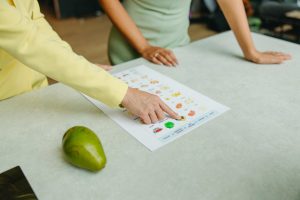
“Conscious Discipline reminds us that the greatest gift we can give our children is not perfection but the ability to navigate imperfections with strength and compassion”.
(General saying)
A Lot has been said on child development, we have styles and approaches and still, parenting is one journey where none of us will ever truly have it all figured out.
We enjoy watching our children grow through the various milestones, hoping we are giving them the very best but still, the question lingers ”what kind of a person will my child be”.
What if there is a way we could equip our children to make more conscious decisions rather than having them learn from mistakes already done?
In this challenging journey, our approach in child nurturing does truly affect their social and emotional growth.
It is therefore, every parent’s paramount responsibility to foster a positive and supportive environment for their child to grow up in.
Conscious Discipline is one effective social-emotional learning approach by Dr. Becky Bailey.
It emphasizes on problem solving and behavior modelling rather than punishment after misbehavior.
In this post, we will highlight and discuss 15 conscious discipline techniques every parent should be aware of.
1. Breathing Techniques
One foundational pillar of conscious discipline is the ability to self-regulate for both parents and children. Breathing techniques are one powerful way to control emotions and manage stress.
When faced with challenges or tension, slow and intentional breathing shifts the brain activity into a more problem-solving optimal state.
One such technique is the S.T.A.R Breaths ( Smile, Take a deep breath, And Relax)
Let them inhale slowly as they silently say S.T.A.R
Exhale slowly as they silently say S.T.A.R
And repeat severally as they focus on the calming words.
2. Connection Time

If you have several children, you’ve probably noticed that they differ in personalities and interests. In light of this, you’d get how unfair it is to just treat them all as similar.
Conscious discipline emphasizes relationship nurturing between the parent and child. This includes being a present parent and actively listening.
Hence, techniques such as hug time, connecting before correcting, and wishing well.
These daily interactions will secure and strengthen the parent-child connections and enhance emotional intelligence in children.
3. Rule Establishment
There is more structure and respect when rules have been clearly stated. Children can take part in the creation of these rules.
Clearly state the expectations you have as parents and what are the consequences of broken rules.
This way punishment is effective and before misbehaving the children are aware of what to expect.
4. Positive Time-Out

You’ve probably punished your child several times for the same misdeed, this is probably because they never understood what the punishment was for to begin with.
Conscious discipline affirms the need for a peace corner, a designated space for children to cool down and reflect positively.
This is a self-soothing exercise.
If emotions run high your child gets to retreat to the peace corner and self-reflect on what they did wrong before they can face any other punishment.
This is a perfect opportunity for them to regulate their emotions.
5. Empathy Journals
The concept of journaling is always a perfect opportunity to validate emotions.
Conscious discipline encourages an empathetic approach to journaling where you can encourage kids to express and understand their feelings through journaling.
The parent in return can use the journaling experience to share supportive messages and celebrate achievements and emotions.
This becomes a shared experience between parents and child where the child learns to be emotionally expressive.
6. Job Charts
Every parent would agree that there’s a form of fulfillment that comes when your child is independently responsible.
Imagine a home where you don’t need to oversee chores to have them get done.
Job charts are a conscious way to instill accountability.
The parent is to come up with a list of chores and designate them per age appropriateness, the charts can be created as a shared activity.
It’s also a nice way to foster cooperation in household chores, hold them accountable for their duties, and also instill important life skills.
Foster a sense of responsibility by assigning age-appropriate tasks to children.
7. Feelings Thermometer

You know those days you are having certain emotions that you really can’t put into words, your kids have those too.
A feelings thermometer is a conscious discipline visual representation of emotions and feelings, a perfect way for both parents and kids to identify, express, and clarify their feelings.
By acknowledging these feelings parents create a safe space for open communication and a way to help navigate through their emotions.
8. Routine Cards
Routines can be hard to navigate and track daily, especially if you have several kids.
You can create visual schedule representations to help children follow their daily routines, this could be bedtime routines, morning routines, or sports routines.
By breaking down tasks into manageable steps, the structure is created and the day-to-day life is streamlined.
This technique establishes consistency and harmonious cooperation.
9. The Brain Smart Start
This is a brief mindfulness exercise to start the day in a positive tone.
Conscious discipline recognizes the importance of teaching children to start the day with mindfulness, this can be integrated into the morning routine.
Children should also be taught how to express their desires and wishes positively.
This fosters emotional intelligence and cognitive development allowing kids to develop a positive outlook on life from a young age.
10. Choice Boards

Choice boards offer options to empower children with decision-making skills.
Make it a family DIY project, where you create a board with visual representations within a certain structured framework. It can simply include choices of foods, snacks, tasks, etc.
These choices promote independence while creating room for them to be responsible and make their own choices.
This way parents can guide their children through the decision process, understanding consequences and owning up to their decisions.
11. Problem-Solving Circles
Growing up whenever the children had fights that night, our mother would have us sit and discuss it until we made up “ You never to go to bed angry”.
The problem-solving circles are a powerful concept meant to foster open and effective communication and conflict resolution.
These circles are meant to engage children and parents in collaborative discussions to find solutions to issues.
Through open dialogue parents allow kids to take part in decision-making and problem-solving conversations.
This nurtures a harmonious culture of open communication and cooperation.
12. Kindness Tree

This should be the most fun of them all, an opportunity to cultivate a culture of kindness in your children where they can recognize and celebrate good deeds.
A kindness tree is created by making a visual representation of a tree and family members get to attach ornaments with certain acts of kindness.
It can be informed of expressions, acts, or compliments that encourage the culture of empathy and kindness.
Everyone should actively participate therefore creating a supportive atmosphere where you upright each other.
13. Gratitude Circles
Gratitude circles are a fulfilling activity that can shift the dynamics of a family positively.
This technique involves having the whole family gather in a warm circle and share moments of appreciation and gratitude.
You can take turns to compliment and pass thank you messages, you can also take time to share and reflect on positive experiences.
A consistent environment of gratitude, allows everyone to share their emotions and learn to delight in the small and big joys of life.
14. Anger Saurus Rex
In the concept of conscious discipline, the anger Saurus rex is a technique aimed at helping children navigate anger.
The family can use their visual representation of anger or creative storytelling to help children understand and manage anger.
Like a Saurus rex, you get to externalize your anger and find a manageable way to deal with it.
This technique provides an open and safe space for expression while equipping kids with the internal ability to manage and tame anger.
15. Regular Family Meetings

As part of the conscious discipline, one important technique is consistent and regular family meetings.
This should be a safe space where the family members can openly communicate discuss issues and celebrate each other.
This helps each member feel like an important part of the family and also comes as an opportunity to foster a close-knit connection between all the members.
This is a very important factor that could boost emotional intelligence and carry the family between the good and odd times.
Final Thoughts
In the nerve-wracking journey of parenting, the art of conscious discipline is a very important concept in guiding families.
It helps create harmonious connections and bonds and in raising holistic individuals.
This toolkit offers everyday strategies that offer opportunities for growth and connection.
If as a parent you can integrate these strategies into your daily lives you are bound to foster emotional intelligence and promote a sense of responsibility and effective communication.
At the end of the day, this intentional approach to parenting is bound to help you create a foundation to raise resilient, well-behaved, compassionate, and emotionally equipped individuals.







Pingback: Navigating=] The Terrible Twos: 15 Hacks for Surviving the Toddler Stage - Big Sister Unfiltered